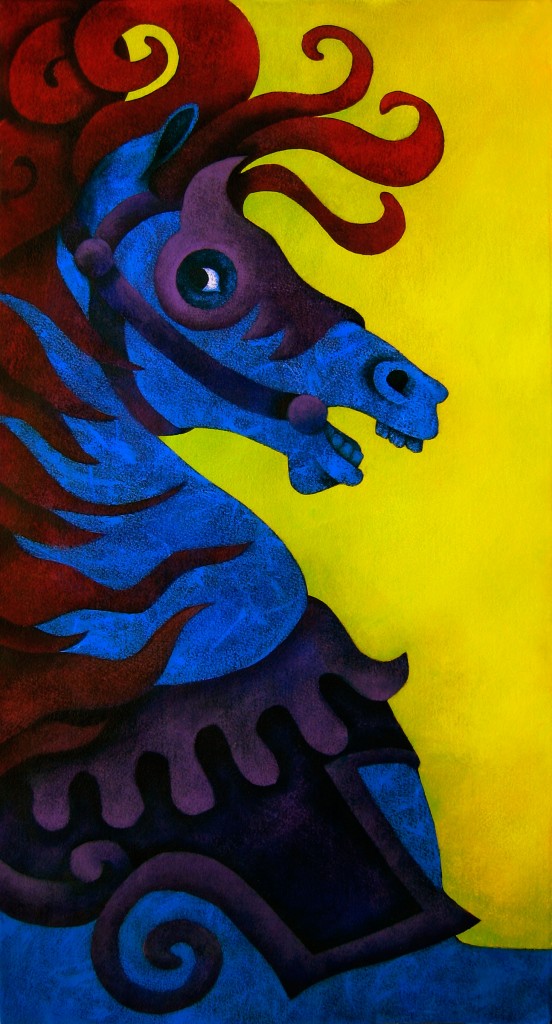
In painting this I was inspired by one of the horses Marcus Illions carved. I’m looking at it right now, hanging in my home office.
The following is an excerpt from my novel. The year is 1957. My young heroine, Brooklyn narrates.
I didn’t have a friend in the world, so I did something I’d never done before: I headed for the Mardi Gras parade all by myself.
The curlicued wrought-iron lampposts were strung from one side of Surf Avenue to the other with strings of purple and red lights, a glowing yellow star at the center of each strand: bracelets suspended in the night sky.
I’d pushed my way to a good spot in front of the B&B Carousell. I was especially proud of this ride because Dad had built the frame as well as the engine. It was the most beautiful ride in Coney Island, with its mountain scenes, beveled mirrors, and medieval lion chariots. Its brightly painted hand-carved horses threw their heads back, manes flying, galloping up and down to the Gebruder Band organ with its hundred and ninety-seven wooden pipes, bass and snare drums, tubas, trumpets, piccolos, flutes, and clanging cymbals, mechanically rolling out “The Carousel Waltz” on this clear, warm, last night of summer.
Everything fades away but sometimes not forever. And so it is with the B&B Carousell (their spelling.)
The city dismantled it, stripped the paint off the original horses and chariots, and had it repainted in the original colors. Then they reopened it in the new Steeplechase Park on the boardwalk in 2013. All the horses, except one that was carved by Marcus Illions, were carved by another nineteenth century master named Charles Carmel.
Read about it in the New York Times:
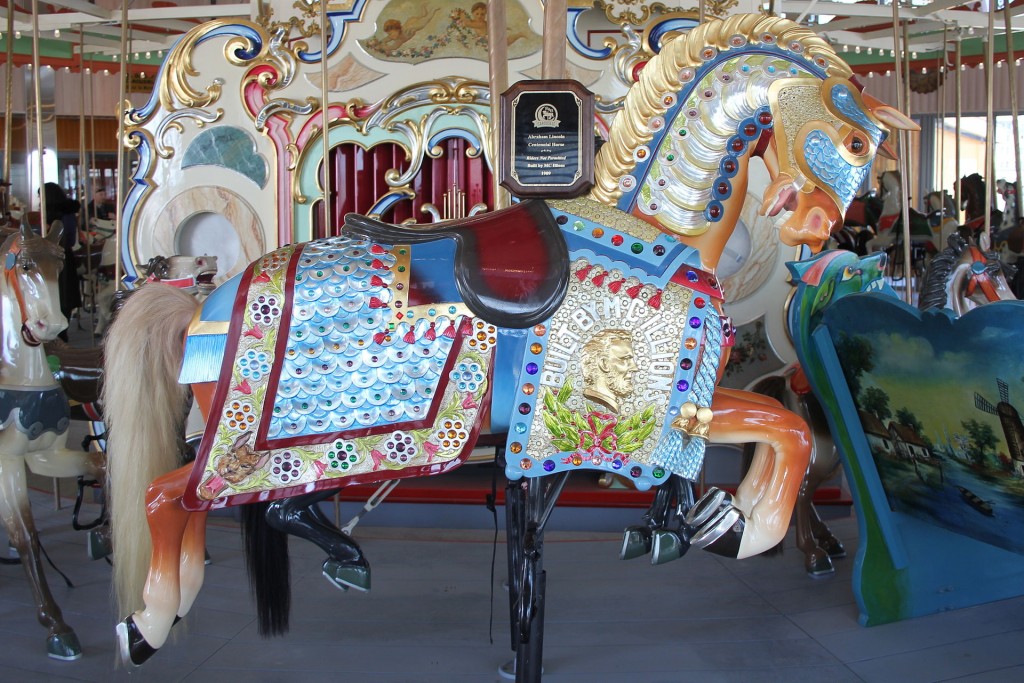
This was carved in 1909 by Marcus Illions. It was one of four he carved to commemorate the centennial of Abraham Lincoln’s birth and the only one left on the B&B carousel. Photo: Peter Greenberg.
Marcus Illions is credited with creating the Coney Island school of carousel carving which is characterized by flamboyant jewels, flying manes, flaring nostrils, and muscular leaping bodies. When I was a kid I had the privilege of riding the originals, up and down they went leaping and galloping toward the brass ring.
Illions was born in 1874 in Lithuania. In my fantasy of the nineteenth century self-made man I see him leave his tiny village as a boy and set out walking to make his fortune with nothing by his skill of carving and a love of horses. He keeps on walking right onto a ship heading for America and then on and on until he reaches the City of Lights at the very end of Brooklyn where he realizes he’s finally arrived home.
To read the real story of Marcus Illions go to:
http://www.coneyislandhistory.org/index.php?g=hall_of_fame&s=illions
You might be interested to know that carousels originated in jousting traditions in the medieval Middle East and were brought back to Europe by the crusaders in the 12th century.
Later, in 18th century Europe carved horses and chariots were sometimes powered by real horses pulling the platform around.
The first steam-powered carousel appeared in England at the Aylsham Fair in about 1861.
When I was a kid I loved to listen to waltzes on my little mono record player at night after my parents exiled me to my room while they watched television on the other side of a permanently sealed door.
The carousel waltz which plays in the B&B Carousell of my story:
One of my favorites was Sleeping Beauty Waltz:
Another favorite was the Nutcracker:



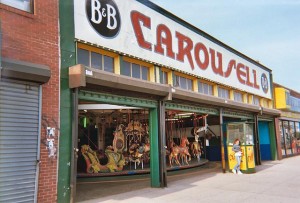
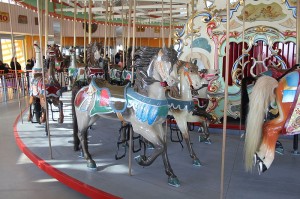
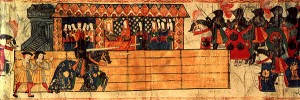







9 comments